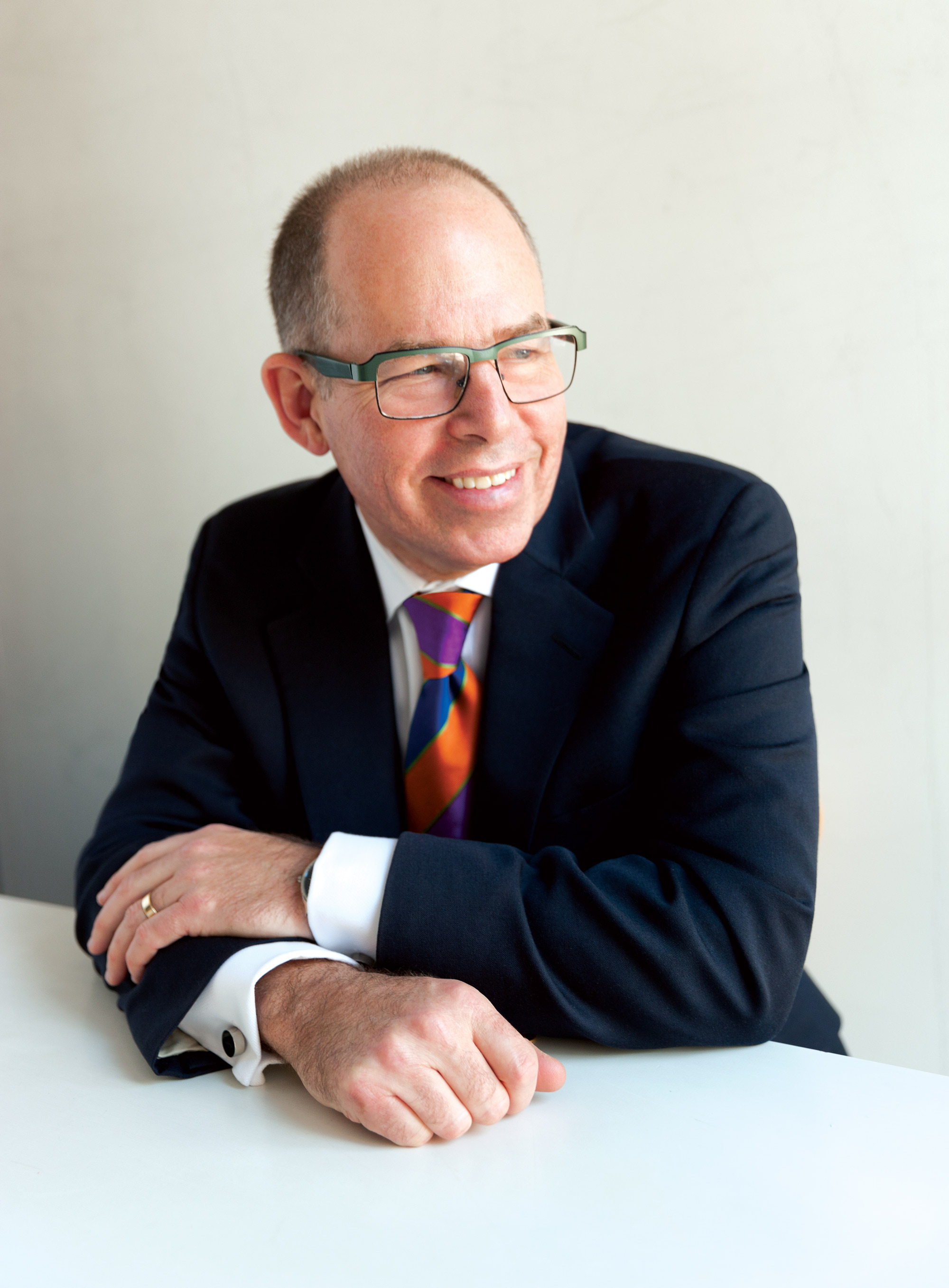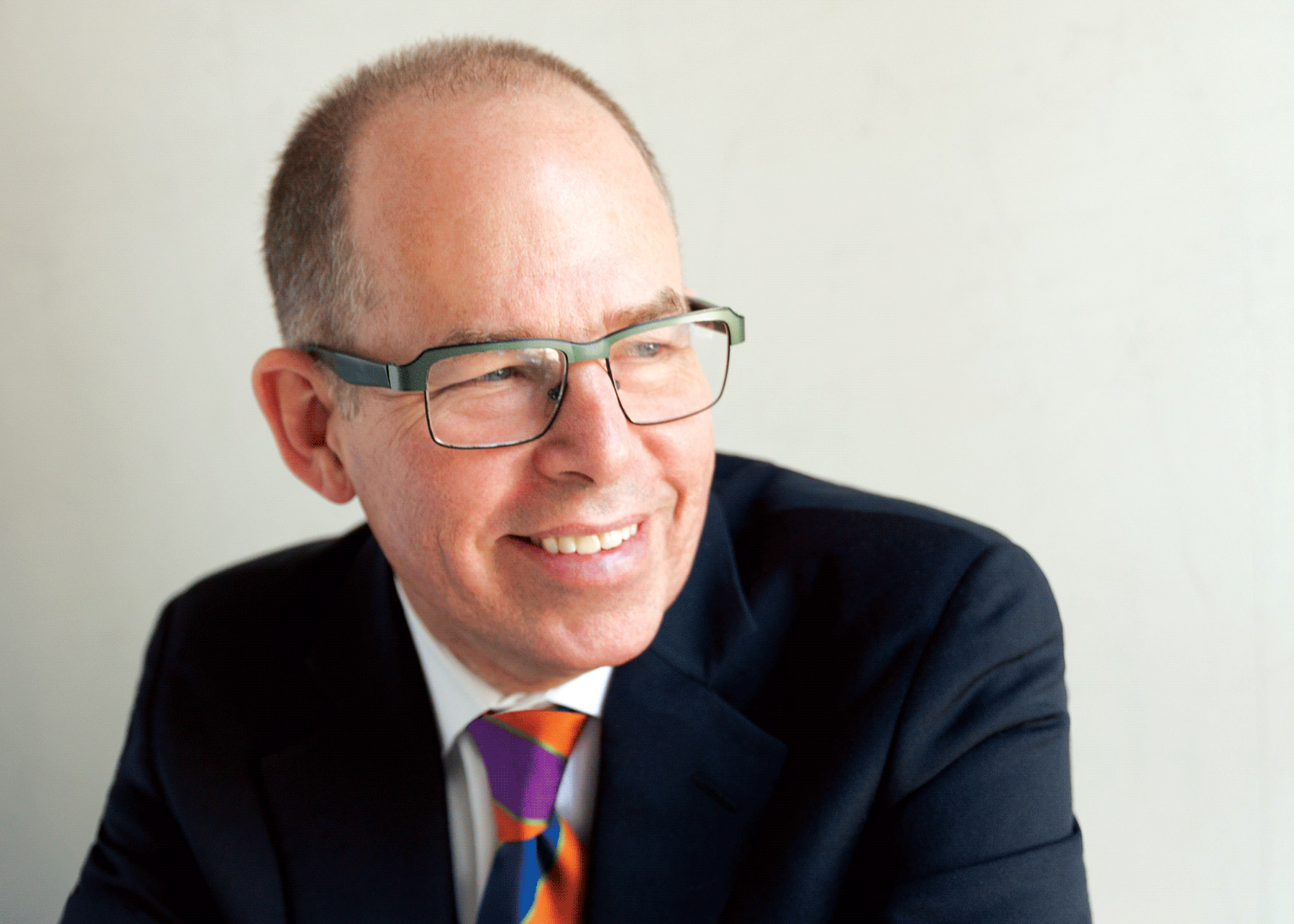
[Photo: Courtesy of Pentagram]
Design guru and educator Michael Bierut, partner at Pentagram, will moderate a conversation with keynoters David Delgado and Dan Goods on day two of the AIA Conference on Architecture in April. This year’s conference focuses in part on anticipating what challenges lie ahead.
You should know Bierut’s work—after all, he’s behind Hillary Clinton’s most recent campaign logo. He’s also has won hundreds of design awards. His work is even represented in permanent collections at the Museum of Modern Art in New York, the Library of Congress in Washington, D.C., and the Musee des Arts Decoratifs in Montreal, among many other prestigious locations. His Pentagram projects have included everything from Benetton and Verizon to the New York Jets, The New York Times, and the Rock and Roll Hall of Fame.
Bierut studied graphic design at the University of Cincinnati’s College of Design, Architecture, Art and Planning. Before joining Pentagram in 1990 as a partner in the New York office, he worked for 10 years at Vignelli Associates, including as vice president of graphic design.
We recently sat down to talk with Bierut about the intersection of design, architecture, and sustainability.
“The test of a good designer is how much ingenuity they can bring when suddenly everything changes.”
MICHAEL BIERUT
gb&d: How does what you do fit into the theme of this year’s AIA Conference of anticipating needs, change, and challenge?
Bierut: Designers, by their nature, and architects included, are called upon to plan things out and hire it off—commissioned by clients to deliver predictable results. They want an outcome that will happen on time and on budget.
On top of that, I think designers and architects are obsessed with detail, obsessed with control, obsessed with getting everything just so. Yet, all of us are aware of the fact that so frequently, when you’re involved in a complex project, no matter how carefully you’ve planned things out, things inevitably go wrong.
Every designer, at one time or another, will encounter a moment where this thing they were contracted to do, the thing they had written a proposal for and gotten approved by the client with timelines and flow charts, gets undermined by reality. Something happens by accident and the plans change. The real test of a good designer is not how well they’re able to make a plan, not how well they’re able to faithfully deliver the elements in place as directed, but how much ingenuity they can bring to the moment when suddenly everything changes.
gb&d: I know you’re very involved with AIGA (American Institute of Graphic Arts). When I served on the board there was constant talk about design for good and using design as a social tool, but there was also hesitation about moving into an area where designers shouldn’t go. Does any of that resonate with where you are right now?
Bierut: Absolutely. I think every design as a plan has this interesting tension between the will of the designer and the idea that the products of their work will actually operate in the real world, and will have an effect on people. People are often reluctant to take the responsibility that comes along with that. What you’re describing is common across all disciplines, where, “That’s not my job” or “I don’t know enough about that” or “no one else is trying it” is the thought.
Scientists, whether they work at NASA or as neuroscientists, are accustomed to navigating ambiguity. Their goal is the unknown. They’re not seeking to just reliably deliver a uniform product every time, on time and on budget, but they’re taking a risk while acknowledging they may fail, and moreover acknowledging that failure may be a chance to learn something important about something they may not understand otherwise.
One of the challenges with designers is our sense and our fear that we’re taking a risk with other people’s money—I think we feel inhibited by that. It’s easy as a designer, or frankly as any kind of service professional, to lose your sense of agency in a collaborative environment. Everyone just kind of retires to the same basic thing they know how to do.
If you decide to think of every process you’re doing as a citizen, a human being, and an inhabitant of Earth, you look at things in a different way. You make choices in a different way. “Is what I’m designing equitable for my fellow citizens? Is it sustainable for the planet we all share? Is it going to somehow make people’s lives better in some appreciable way?” There’s a chance to answer “yes” to all of those things if you retain your sense of purpose in all this work.
I think it’s easy to say, “Look, none of those are in my job description. I’m just here to do this one thing, and when I do it I get paid.” I say that in a very cynical position, but I say that pleading guilty to having done that myself.
gb&d: When you think about responsible design and changing trends and mindsets, do you feel you have to consider how the projects fit into the community, and how the design is going to affect the people that will use it?
Bierut: The most interesting parts of any project have to do with the effect it’s going to have on people’s lives and how it’s going to fit into the larger world. When I started in my career, I think I just saw my obligation was to my craft—the thing that was right in front of my nose—and getting that perfect and doing that in a way that would satisfy my boss, who held the power of a paycheck over me. Your responsibility is perceived at a very limited framework. As you mature as a designer, if you’re lucky and you have good role models, and if you’re learning from what is around you and you’re trying to retain a sense of integrity as a person as well as a professional, inevitably you get interested in the impact your work is having on others. Then, once you’re aware of what that impact is, that becomes the most pressing aspect of any project you undertake.
gb&d: When you think about the design world, what are the important questions people should be asking now?
Bierut: The fundamental questions all have to do with, “I’ve been invited to create something new and introduce it to the world, so what’s this thing for? What’s the motivation of the person that’s commissioning me? Do I agree with that motivation? Do I have reservations about it? Am I enthusiastic? Am I sure this is the best possible way to accomplish this goal? Is there a way to do it more efficiently? Is there a way to do it more beautifully? Is there a way to do it more ingeniously or in a way that can be of benefit to more people to make it more successful?”
The best designers are able to anticipate the needs of people in a sensitive way so they’re able to fulfill the brief as it was given way back in the beginning, but do it in a way that’s toward additional light or additional benefit to the people that end up receiving it on the other end.
gb&d: What’s most interesting to you in the realm of sustainability?
Bierut: We’re coming out of a period where the institutions of civil society were aligning with the causes of sustainability and renewable energy, and because of changes in the political current, we’re entering a world where those concerns are no longer as urgent as they once were, and in some cases are being completely ignored or reversed.
I’m really interested to see what’s going to happen—are people really willing to pretend it was all a dream or some inconvenience, and now we go back to guzzling gas and dumping shit in streams? People’s awareness of the impact their consumption activity and their lifestyle is having on the environment—that that won’t cease to exist just because someone in Washington has decided it’s not important anymore.

